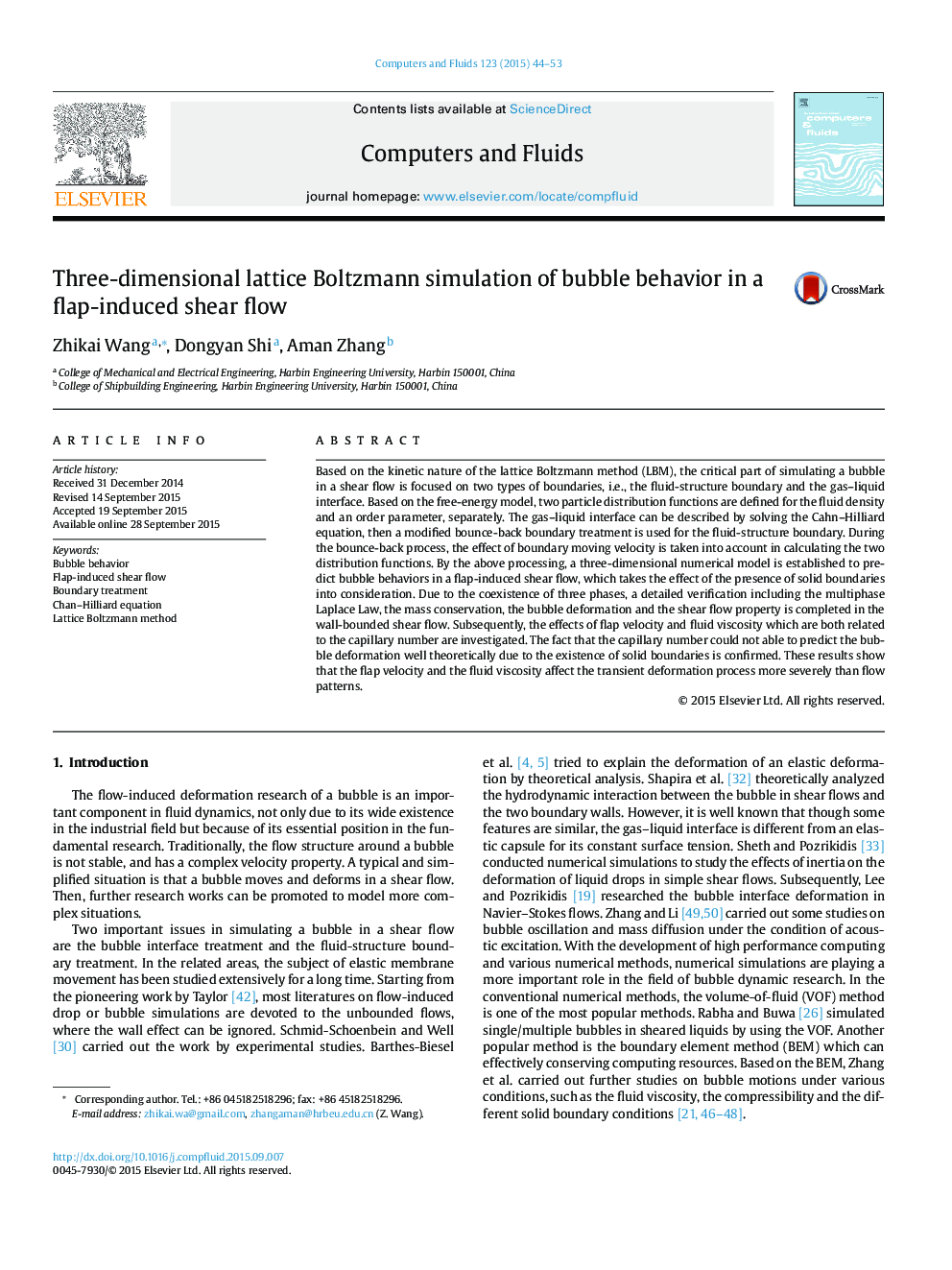| کد مقاله | کد نشریه | سال انتشار | مقاله انگلیسی | نسخه تمام متن |
|---|---|---|---|---|
| 761246 | 1462687 | 2015 | 10 صفحه PDF | دانلود رایگان |
• Bubble dynamics in a wall-bounded shear flow are studied based on the 3D LB model.
• Modified fluid–structure boundary treatments for three-phase flows are validated.
• In wall-bounded shear flows, the Taylor theory is not suitable for the prediction.
• Effects of wall velocity and fluid viscosity on bubble deformations are studied.
• The studied factors affect bubble deformations more severely than flow patterns.
Based on the kinetic nature of the lattice Boltzmann method (LBM), the critical part of simulating a bubble in a shear flow is focused on two types of boundaries, i.e., the fluid-structure boundary and the gas–liquid interface. Based on the free-energy model, two particle distribution functions are defined for the fluid density and an order parameter, separately. The gas–liquid interface can be described by solving the Cahn–Hilliard equation, then a modified bounce-back boundary treatment is used for the fluid-structure boundary. During the bounce-back process, the effect of boundary moving velocity is taken into account in calculating the two distribution functions. By the above processing, a three-dimensional numerical model is established to predict bubble behaviors in a flap-induced shear flow, which takes the effect of the presence of solid boundaries into consideration. Due to the coexistence of three phases, a detailed verification including the multiphase Laplace Law, the mass conservation, the bubble deformation and the shear flow property is completed in the wall-bounded shear flow. Subsequently, the effects of flap velocity and fluid viscosity which are both related to the capillary number are investigated. The fact that the capillary number could not able to predict the bubble deformation well theoretically due to the existence of solid boundaries is confirmed. These results show that the flap velocity and the fluid viscosity affect the transient deformation process more severely than flow patterns.
Journal: Computers & Fluids - Volume 123, 21 December 2015, Pages 44–53
